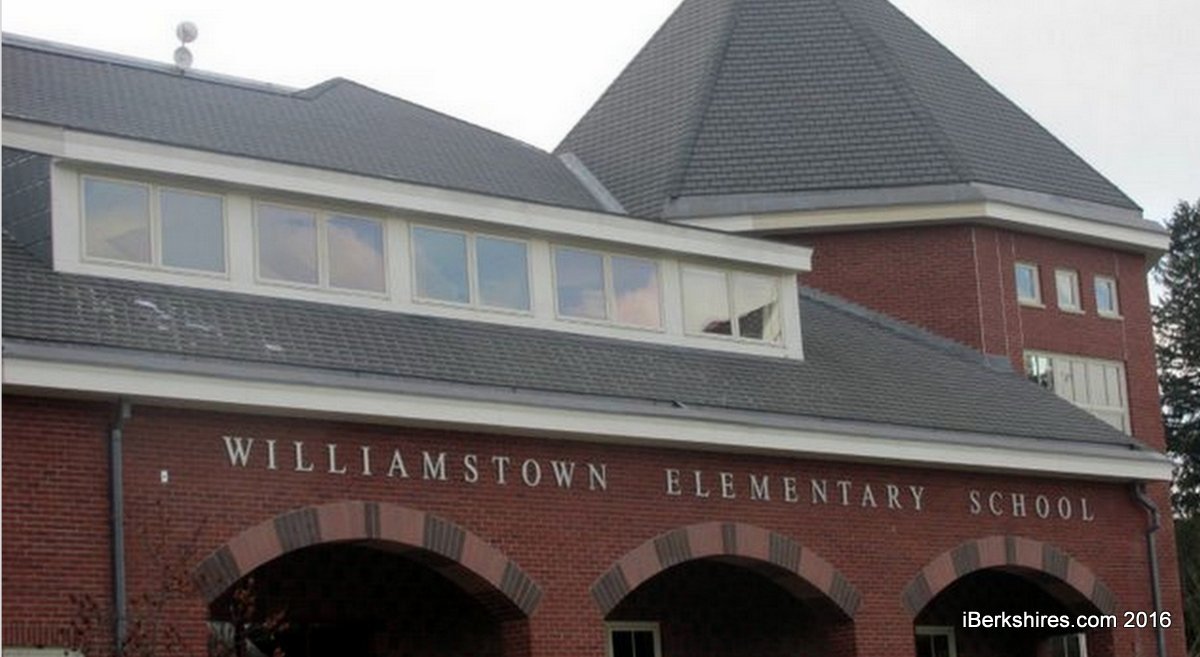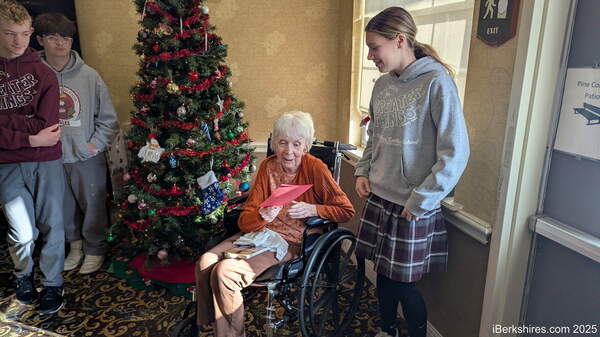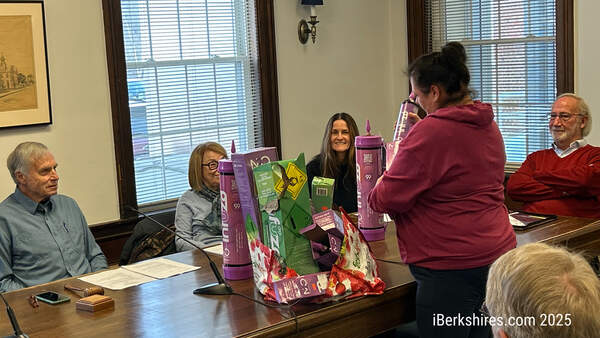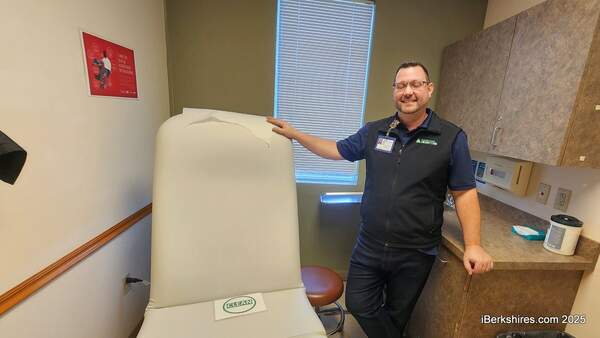
Advocates Continue to Push on Williamstown Preschool Program
WILLIAMSTOWN, Mass. — Four members of the Williamstown School Committee on Thursday again explained their reasons for supporting a fiscal 2017 budget that includes a reduction to the school's popular preschool program.
At a special meeting originally rescheduled from April 13, the committee members explained why they did not oppose the school administration's decision to eliminate the full-day option for Side-By-Side.
Superintendent Douglas Dias, acting in consultation with the district's director of pupil personnel services, decided this year that the special education population Side-By-Side was designed to serve can have its needs met in two half-day sessions.
Traditionally, the program has offered half-day and full-day classes for both the special needs population and the non-special needs population — both "sides" referred to in the program's name.
Since Dias announced that decision in February, the program's teachers, parents, parents of former Side-By-Side students and other community members have alternately lobbied and demanded that the full-day option be restored.
At the latest in a series of contentious meetings on Thursday, Dias said he erred by casting the Side-By-Side reduction as being driven by fiscal concerns. In fact, for him, it is more a matter of evaluating the program's place in the district's educational program.
"My biggest regret was, early on, I did present it as a budgetary matter," Dias said. " It really wasn't a budgetary matter. It came to my attention in October or November when I was looking at the budget. But as I delved more deeply and identified the needs of the kids, I realized it was not a budgetary matter.
"My first concern has always been for the students in this building. And I know this change is drastic, but that's part of my job. Part of my job is to shine light into corners that sometimes we don't want to look at and to make recommendations to you and make decisions that are not popular. I didn't get into this career to be popular. I got into this job to help our kids get the best education possible, and they will."
One by one, the School Committee members explained that they believed Dias was acting in the school's best interest and trusted his assessment that the half-day programming will meet the needs of children.
"To me, that's largely where the discussion ends," Chairman Dan Caplinger said in a meeting telecast on the town's community access television station, WilliNet. "In my role as a School Committee member, there are two things I have direct control over: hiring a superintendent to administer the district and overseeing the budget to fund the superintendent's programs. That's my justification for having supported the budget as presented."
Committee member Catherine Keating said she likes the idea of a full-day preschool program, but she did not like the ideas floated by Side-By-Side's proponents for using the preschool program to generate revenue.
"I don't think tuitioning in more children or even raising tuition to make the program a revenue source for the school is the answer or even very appropriate," Keating said. "I think that would undermine what the program is actually about in terms of having classroom diversity and being a program that is congruent with the philosophy of a public school.
"I think to lower tuition and make the program more affordable to everyone living in this town actually makes more sense. Doing so would increase the cost of the program."
She also said that she does not believe the administration would cut a program if it believed the cut would negatively impact education as some in the community have alleged.
"We are two points away from being named a Level 1 School District," Keating said. " I don't think the administration of this school would do anything to undermine all this work. If changing the structure of Side-By-Side would have a detrimental effect on the long term achievement of children with special needs, that would completely undermine much of the other work being done at this school."
Committee member Joseph Johnson agreed.
"Clearly, Side-by-Side, when Dr. Dias decided to do what he did, is a big skunk to poke," Johnson said. "This affects a lot of people. To my mind, that is all the more reason to believe Dr. Dias has the best of intentions. He wouldn't do this lightly.
"I don't think the School Committee should hold up the budget based on one item in it. I do think the School Committee hires and fires the superintendent. I think the superintendent, any superintendent, has the right to move resources around in the school in the way feels best affects all students."
Committee member John Skavlem said he abhors change but applauds those who have the courage to make change when they see a need to do so.
"As with any program, Side-By-Side should be evaluated every year," Skavlem said. "And our new superintendent and his administration are doing what perhaps was lacking in the past.
"This year with the benefit of fresh thinking and new eyes on it, we have the opportunity to consider the best way to allocate our resources."
Committee member Richard Reynolds did not attend Thursday's meeting.
It is unlikely any of those arguments swayed the nine residents who spoke in favor of restoring the full-day preschool in a 20-minute public comment period at the beginning of Thursday's meeting.
In fact, after the committee members discussed the issue, members of the public asked for an opportunity to make a rebuttal. Caplinger declined to give them that chance, telling the group that their comments were heard and taken into consideration but the public comment part of the meeting was over.
During the public comment, the committee heard from veteran preschool teacher Fern Murtagh, who told the panel that two half-day sessions cannot take the place of a full-day preschool experience for children who need it.
"When I think about the prospect of the full-day Side-By-Side being eliminated, I don't think of the program," Murtagh said. "I see the faces of individual children with [individual education programs] who are in my class and the faces of their parents who sat with me at team meetings not even a year ago, where we decided a cohesive full-day program was what their child needed.
"You are making a decision that will change the future of children I teach every day."
Three of the nine residents who spoke during the public comment period are running in a five-person race — along with the incumbent Caplinger — for two seats on the School Committee. Joseph Bergeron, Liam Brody and Maura McCarthy Lawson each used the two minutes allotted them to argue for restoration of the program.
Another resident made a thinly veiled threat that the Side By Side issue could be used to defeat the school budget at the May 17 annual town meeting.
"I hope the administration and the School Committee will shed some light on this [decision] today," David Irwin said. However, many in the community disagree with the administration and the School Committee. If that's the case, that's fine. We can move on and discuss this at the town meeting."
Town meeting will be asked to approve an omnibus budget, basically saying yea or nay to the bottom line figure. Town meeting will not have the option of reopening the budget and directing the district how to spend its money.
After Caplinger denied the request for a second public comment period, the majority of the audience left the school library. One could be overheard by the committee to say the decision not to continue the discussion "speaks more volumes than I can," which drew an angry retort from Skavlem.
"I'd like to make a point that most of the audience just left, and, clearly, the rest of the school's business is not of their interest," he said. "And I find that very shameful. That's indicative to me. That's shameful."
In other business, the School Committee decided to form a finance subcommittee, following the model at Mount Greylock, where the subcommittee meets regularly with the superintendent and business manager to review the budget in more detail and reports out to the full committee at its monthly meetings.
Caplinger said he had received a letter from the chairman of the town's Finance Committee encouraging some sort of advisory body for the School Committee. But Caplinger noted that the committee had discussed the formation of a subcommittee long before his appearance before the Finance Committee last month.
Although the School Committee's subcommittee could have the option of asking outside experts to participate in its meetings, the committee and the superintendent agreed it was best to limit subcommittee membership to members of the School Committee itself.
"One of the advantages of having it be a committee of elected officials is we're aware of the legalities, and … familiar with the confidentiality requirements and have been trained to deal with them," Caplinger said.
The committee decided not to fill the two subcommittee spots but rather wait until after the May 10 town election and the committee's subsequent reorganization meeting.
The committee did decide to add Williamstown Elementary's name to the list of districts signing resolutions calling for maintenance of the current charter school cap and implementation of the recommendations of the Foundation Budget Review Commission.
Dias explained to the School Committee his plans for two community forums this spring to look at long-range planning for the school. Caplinger told his colleagues that he, his counterparts at Lanesborough Elementary School and Mount Greylock and Dias met with the School Committee chairs in New Ashford, Hancock and Richmond for a preliminary discussion as the Shaker Mountain Union No. 70 looks at the possibility of a shared services agreement for administration.
And the panel discussed the procedure for its upcoming evaluation of Dias and the possibility of a Tri-District School Committee daylong work session sometime this summer. Dias said he hoped that in addition to talking about issues that affect the Williamstown and Lanesborough elementary schools and Mount Greylock, the daylong meeting would be a chance to receive training for all three committees from a consultant with the Massachusetts Association of School Committees.
Tags: fiscal 2017, preschool, WES,















